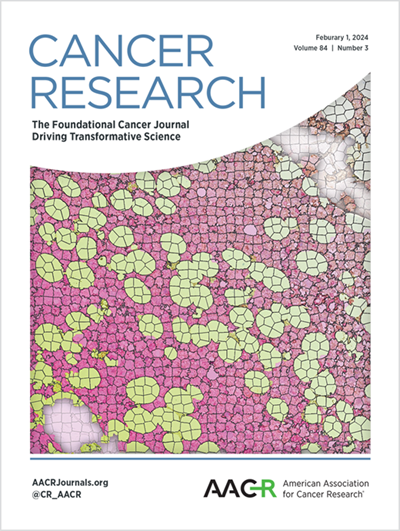SpatialDeX 是一种用于实体瘤空间转录组学数据细胞类型解卷积的无参照方法
IF 16.6
1区 医学
Q1 ONCOLOGY
引用次数: 0
摘要
空间转录组学(ST)技术的飞速发展使得对组织切片中的基因表达进行全转录组分析成为可能。尽管出现了单细胞分辨率平台,但大多数 ST 测序研究仍以多细胞分辨率进行。因此,要描述细胞类型特异性空间组织的特征,就必须对空间点内的细胞特征进行解卷积。为此,我们开发了一种基于回归模型的方法--SpatialDeX,用于估计肿瘤ST斑点中的细胞类型比例。SpatialDeX 的性能与基于参考的方法不相上下,在模拟 ST 数据中的表现优于其他无参考方法。在使用实验 ST 数据时,SpatialDeX 的性能优于基于参考和无参考的方法。此外,对 SpatialDeX 确定的肿瘤点进行的泛癌症聚类分析揭示了不同癌症类型内部和之间不同的肿瘤进展机制。总之,SpatialDeX 是一种有价值的工具,无需 scRNA-seq 参考即可从 ST 数据中揭示组织的空间细胞组织。本文章由计算机程序翻译,如有差异,请以英文原文为准。
SpatialDeX is a Reference-Free Method for Cell Type Deconvolution of Spatial Transcriptomics Data in Solid Tumors
The rapid development of spatial transcriptomics (ST) technologies has enabled transcriptome-wide profiling of gene expression in tissue sections. Despite the emergence of single-cell resolution platforms, most ST sequencing studies still operate at a multi-cell resolution. Consequently, deconvolution of cell identities within the spatial spots has become imperative for characterizing cell type-specific spatial organization. To this end, we developed SpatialDeX, a regression model-based method for estimating cell type proportions in tumor ST spots. SpatialDeX exhibited comparable performance to reference-based methods and outperformed other reference-free methods with simulated ST data. Using experimental ST data, SpatialDeX demonstrated superior performance compared with both reference-based and reference-free approaches. Additionally, a pan-cancer clustering analysis on tumor spots identified by SpatialDeX unveiled distinct tumor progression mechanisms both within and across diverse cancer types. Overall, SpatialDeX is a valuable tool for unraveling the spatial cellular organization of tissues from ST data without requiring scRNA-seq references.
求助全文
通过发布文献求助,成功后即可免费获取论文全文。
去求助
来源期刊

Cancer research
医学-肿瘤学
CiteScore
16.10
自引率
0.90%
发文量
7677
审稿时长
2.5 months
期刊介绍:
Cancer Research, published by the American Association for Cancer Research (AACR), is a journal that focuses on impactful original studies, reviews, and opinion pieces relevant to the broad cancer research community. Manuscripts that present conceptual or technological advances leading to insights into cancer biology are particularly sought after. The journal also places emphasis on convergence science, which involves bridging multiple distinct areas of cancer research.
With primary subsections including Cancer Biology, Cancer Immunology, Cancer Metabolism and Molecular Mechanisms, Translational Cancer Biology, Cancer Landscapes, and Convergence Science, Cancer Research has a comprehensive scope. It is published twice a month and has one volume per year, with a print ISSN of 0008-5472 and an online ISSN of 1538-7445.
Cancer Research is abstracted and/or indexed in various databases and platforms, including BIOSIS Previews (R) Database, MEDLINE, Current Contents/Life Sciences, Current Contents/Clinical Medicine, Science Citation Index, Scopus, and Web of Science.
 求助内容:
求助内容: 应助结果提醒方式:
应助结果提醒方式:


